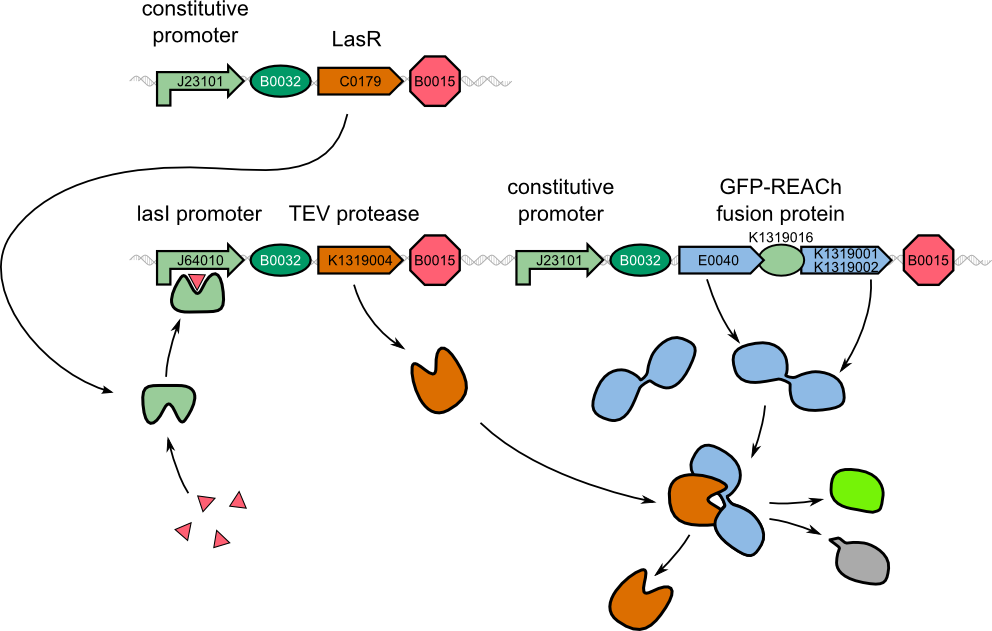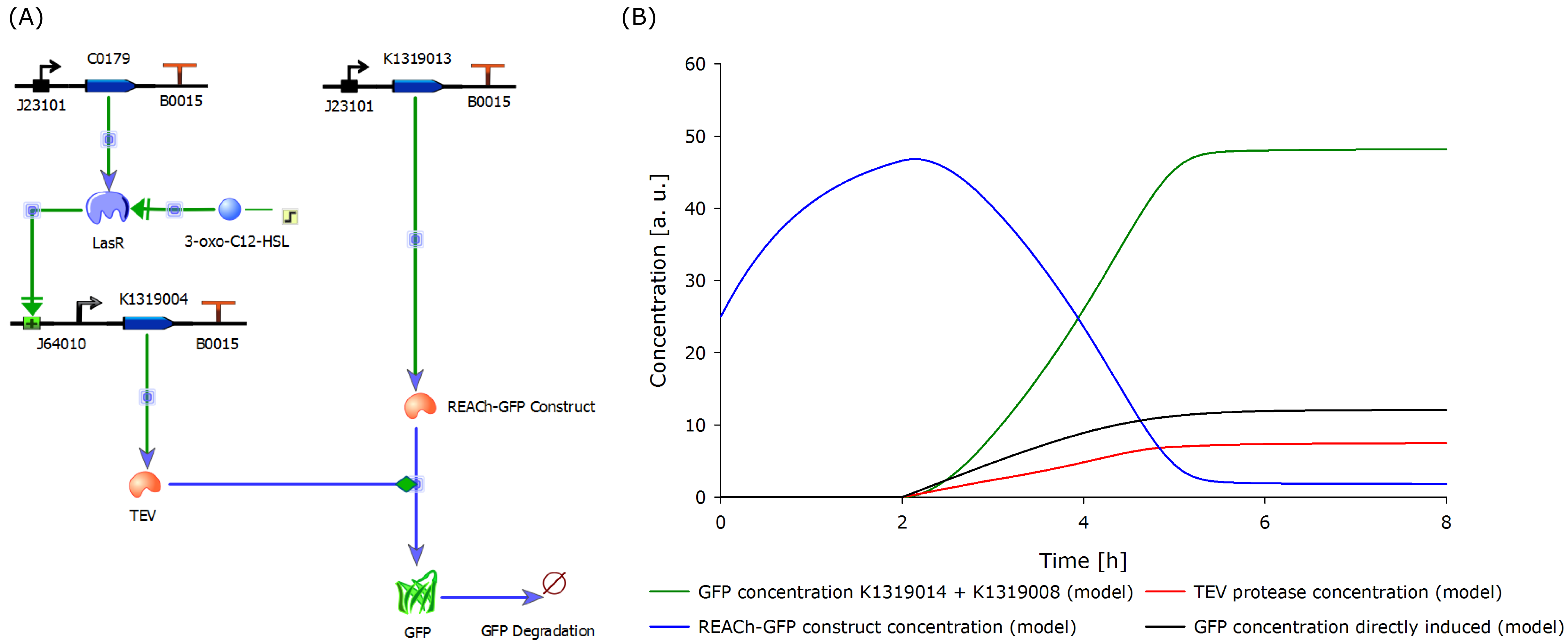Team:Aachen/Project/Model
From 2014.igem.org
m (→Modeling) |
m |
||
| Line 18: | Line 18: | ||
| - | + | To compare the response time of the fluorescence signal between our theoretical system and a traditional biosensor, we included a direct expression of GFP in the same plot (above). In the results show above, the strength of the promotor used for the direct GFP expression (traditional approach) is even twice as high as the strength of the promotor upstream of the TEV coding sequence in our new approach. Despite the weaker promotor, a '''higher GFP concentration is generated in the model of the novel biosensor''', predicting a quicker responde time of our system. | |
| - | + | The model predicted that our approach should be an improvement over the commonly used direct expression, so we proceded with the clonings and assembled plasmids to test the system. | |
| + | |||
| + | As the first experimental data came in, we correlated the experimental data gathered from the characterization of the double plasmid system K1319014 + K1319008 to the model. Due to the complexity of the quorum sensing circuit, we assembled an IPTG-inducible TEV protease instead of the 3-oxo-C<sub>12</sub>-HSL-inducible version. | ||
Although the modeled system and the existing system differ regarding the induction mechanism, the correlation was high. However, since the final 3-oxo-C<sub>12</sub>-HSL inducible construct could not be built in time, a new model was designed according to the existing and functional double plasmid system. | Although the modeled system and the existing system differ regarding the induction mechanism, the correlation was high. However, since the final 3-oxo-C<sub>12</sub>-HSL inducible construct could not be built in time, a new model was designed according to the existing and functional double plasmid system. | ||
Revision as of 21:22, 17 October 2014
|
|
 "
"


